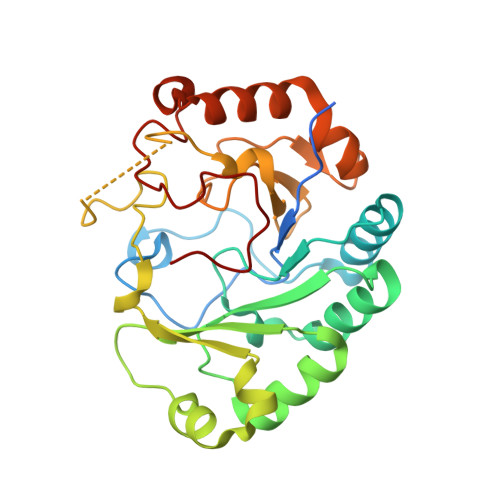X-ray analysis of butirosin biosynthetic enzyme BtrN redefines structural motifs for AdoMet radical chemistry.
Goldman, P.J., Grove, T.L., Booker, S.J., Drennan, C.L.(2013) Proc Natl Acad Sci U S A 110: 15949-15954
- PubMed: 24048029
- DOI: https://doi.org/10.1073/pnas.1312228110
- Primary Citation of Related Structures:
4M7S, 4M7T - PubMed Abstract:
The 2-deoxy-scyllo-inosamine (DOIA) dehydrogenases are key enzymes in the biosynthesis of 2-deoxystreptamine-containing aminoglycoside antibiotics. In contrast to most DOIA dehydrogenases, which are NAD-dependent, the DOIA dehydrogenase from Bacillus circulans (BtrN) is an S-adenosyl-l-methionine (AdoMet) radical enzyme. To examine how BtrN employs AdoMet radical chemistry, we have determined its structure with AdoMet and substrate to 1.56 Å resolution. We find a previously undescribed modification to the core AdoMet radical fold: instead of the canonical (β/α)6 architecture, BtrN displays a (β5/α4) motif. We further find that an auxiliary [4Fe-4S] cluster in BtrN, thought to bind substrate, is instead implicated in substrate-radical oxidation. High structural homology in the auxiliary cluster binding region between BtrN, fellow AdoMet radical dehydrogenase anSME, and molybdenum cofactor biosynthetic enzyme MoaA provides support for the establishment of an AdoMet radical structural motif that is likely common to ~6,400 uncharacterized AdoMet radical enzymes.
Organizational Affiliation:
Departments of Chemistry and Biology and Howard Hughes Medical Institute, Massachusetts Institute of Technology, Cambridge, MA 02139.


















